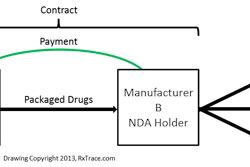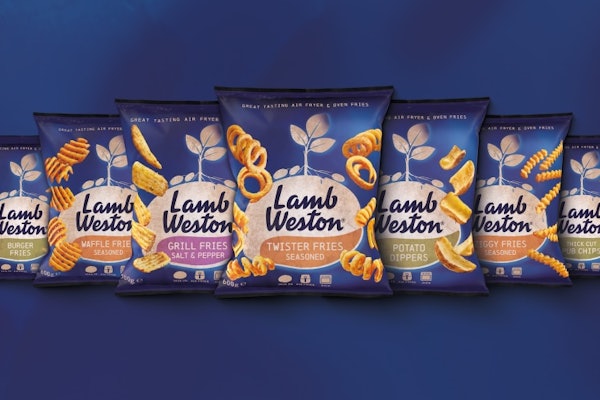It may be difficult to see through the hype surrounding digital printing, because the actual packaging market penetration, by percentage, is still quite low. Its early success has been in labels for food and beverage products, but it is poised to move to other categories and other substrates, such as folding cartons and flexible. It’s important to plan ahead and think of all the factors that warrant consideration when thinking of going digital.
1. Run size. Digital printing is growing in markets that require specialized, frequently updated labels like wines and craft beers. Small brands or brands with many SKUs benefit most from digital printing. The short changeover times and reduced material waste can make it an economically advantageous option. The run numbers are getting higher as to competitiveness on price, and lower as to competitiveness on speed.
2. Speed to market. Traditional print methods like flexo, gravure, and offset sometimes take weeks to prepare the plates or rolls and get the printer run-ready. CPG companies these days, whether through poor planning or for a competitive advantage, can’t wait more than a few days before getting new designs out the door, especially with seasonal or promotional campaigns.
3. The cost of materials. In a way, comparing digital to flexo is like comparing apples to oranges, but careful consideration of all the numbers reveals where the cost savings can be realized. Settle on the cost of materials first, and then compare total costs. Waste, as already mentioned, is a significant factor in assessing printing costs long-term. Standard overrun percentages are often lower with digital, and with the ever-changing demands of customers and retailers, labels in storage often become obsolete, and that can be a substantial loss to absorb.
4. The cost of time. The cost-of-time equation, both short-term and long-term, is being scrutinized more and more these days. The limiting factor in any production chain can clog up design and management processes in unseen ways. It’s difficult to focus intently on the next project when the current one is on hold or held up in prepress.
5. Variability of SKUs. Beverage companies with many flavor varieties, diet options, and performance lines can see the benefits of localized, on-demand printing. But even without many SKUs, many upstart brand owners are introducing multiple designs within a single SKU. A wine maker, for instance, packed every case of one varietal with 12 different label designs, albeit all aligned in a theme.
6. International presence. Even if foreign expansion is only on the horizon, it is worth factoring into your long-term printing plans. Foreign language requirements on packaging continue to evolve and become more specific. Digital is a go-to solution for national brands expanding into international markets, because even dominant players sometimes have to start with small volumes. Plus, they want to appear committed to the market with well-designed and well-produced multilingual packages. For those companies, asset management software is also a must.
7. Promotion opportunities. Two examples of consumer-directed, design-your-own packages are telling. Heineken beer in Europe has run several campaigns that allow customers to order six-packs of beer, through the mail, that arrive with their own personal designs. Jones Soda in the U.S. uses only customer-submitted label designs on their products. Fans send in pictures, and Jones decides which to use in broad distribution.
8. High-end effects. Digital printing does not allow as much expandability to add effects, embossing, or die-cutting in-line. However, more brand owners are testing out the cost efficiency of “combination printing,” which runs the packaging substrate through two different print cycles.
9. Comfort with your print provider. Be careful that your print provider is knowledgeable in digital printing inks. The chemistry of digital inks can be tricky because of the way inks adhere to the substrate. Different substrates have different “surface tensions” regarding the energy of the ink transfer, its adhesion, and the post-printing treatment.
10. Converter flexibility. Plan ahead. It’s common now to start printing on digital and, as volumes increase, switch over to flexo printing. Sometimes digital is used as a test run, a proofing process, or as a seamless supplement to flexo. Communicate with your printer about what you should expect their practices to be. Make sure your printer guarantees a seamless substitution with proof copies and production run samples. Once they have proven a high level of quality assurance, they may not—by agreement—alert customers of when they substitute digital for flexo.
11. Cross-substrate color matching. Be aware that it’s not always easy to match what was produced digitally with a different process on different substrates, such as flexible film or paperboard. That’s why some printers will do a “dumbed down” test run on digital to show what’s possible on other printers. Digital on flexible substrates has limitations that include limited web widths, lamination time limits (within 24 hours), and longer run minimums.
12. Potential hidden costs. One of the commonly cited benefits to digital printing is saving the early investments that are often required with other methods. Aways expect and require an extensive analysis of every project, apples-to-oranges comparisons, and transparency into your printer’s processes as well.
Liked this article? Download the Flexible Playbook here. Download the Labeling Playbook here. Download the Package Development Playbook here.



























